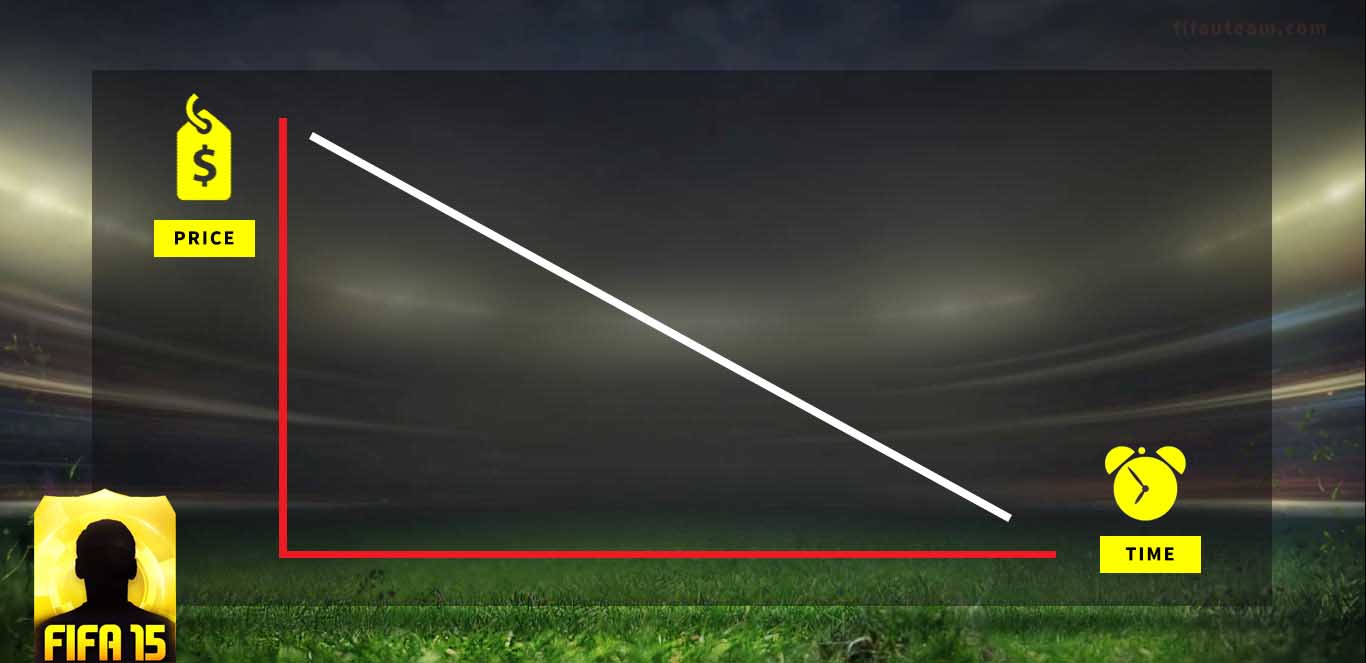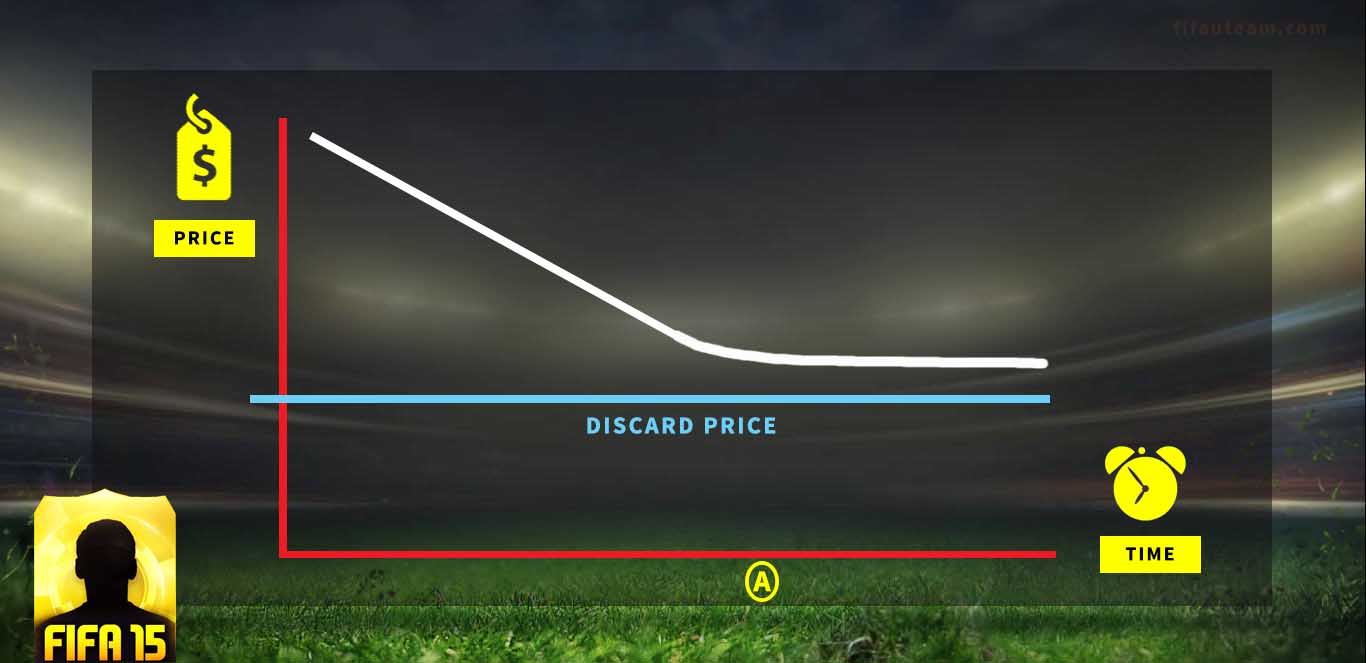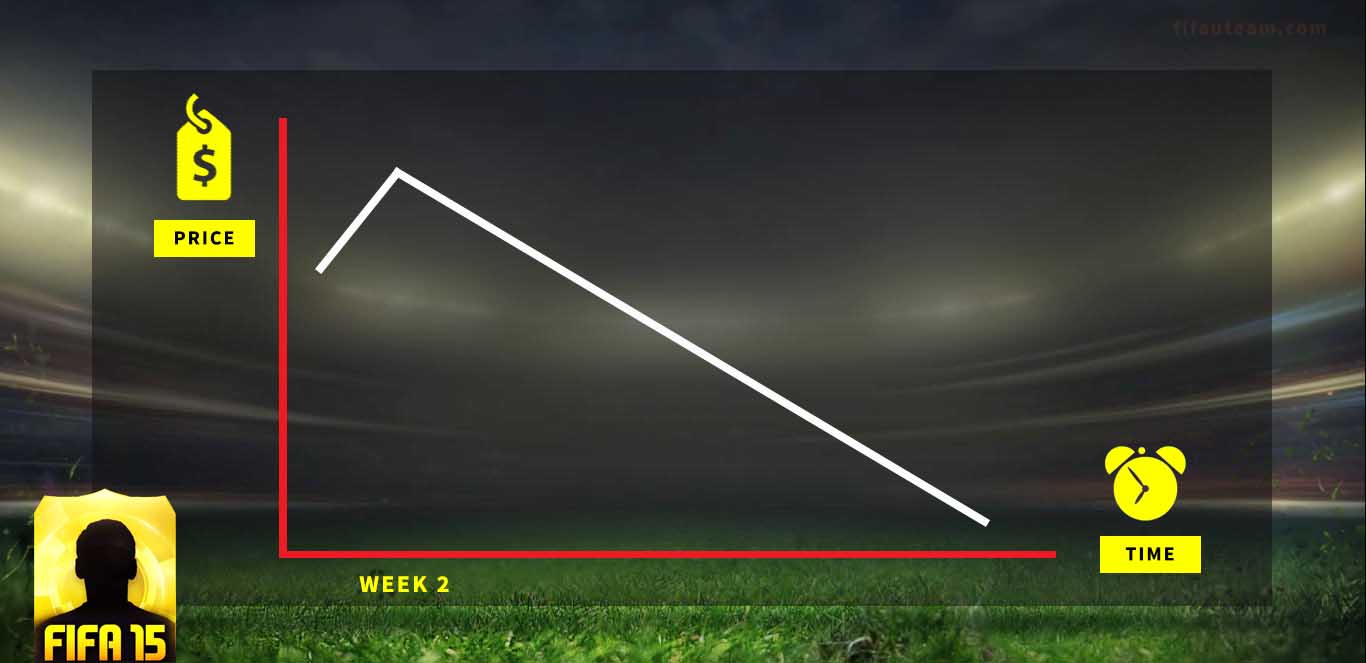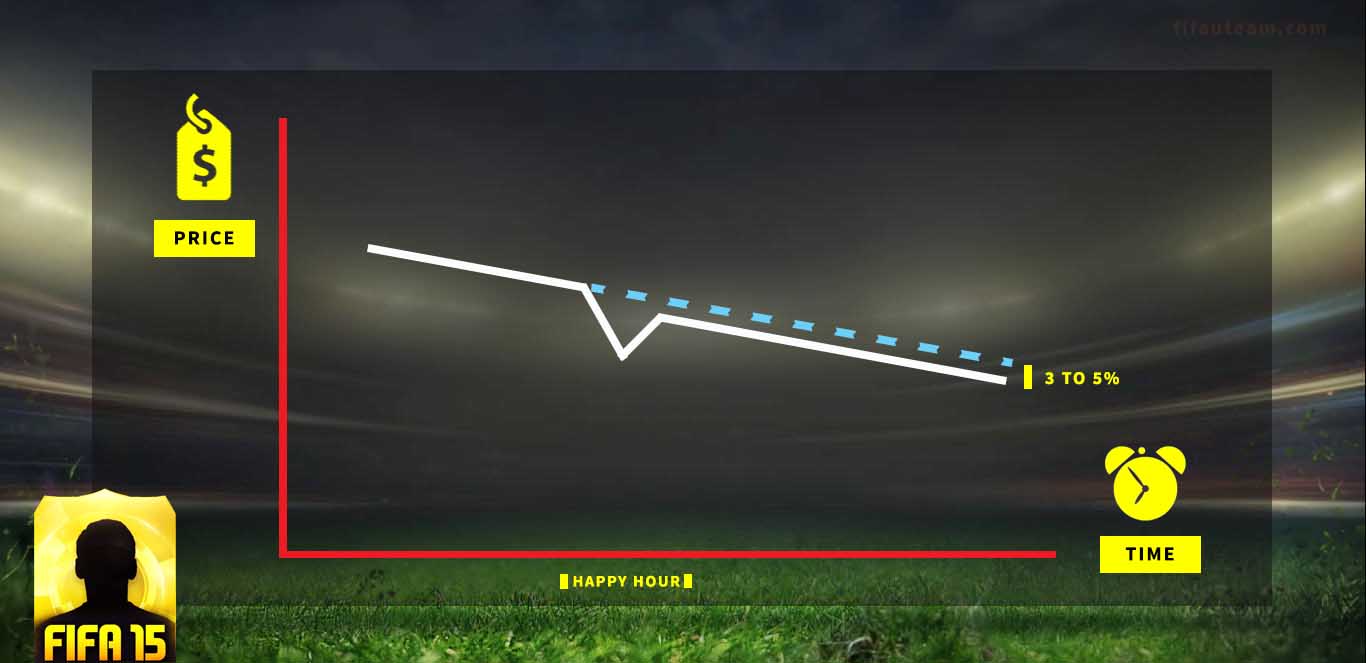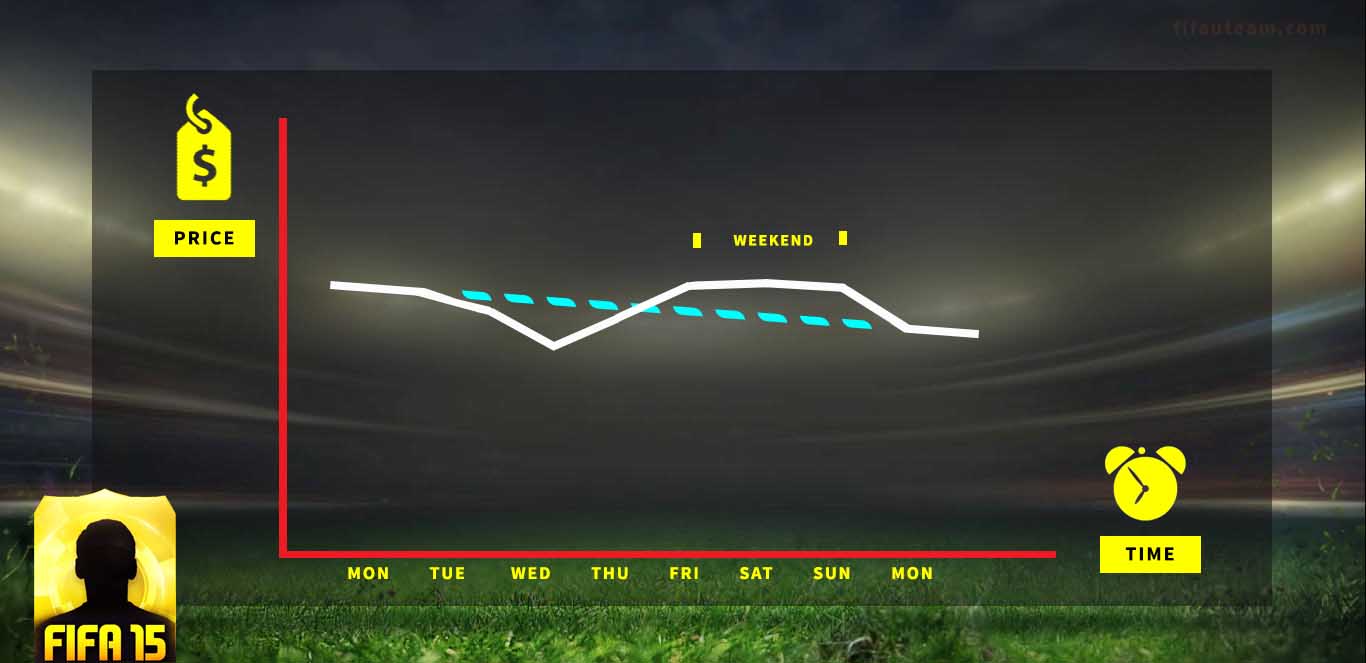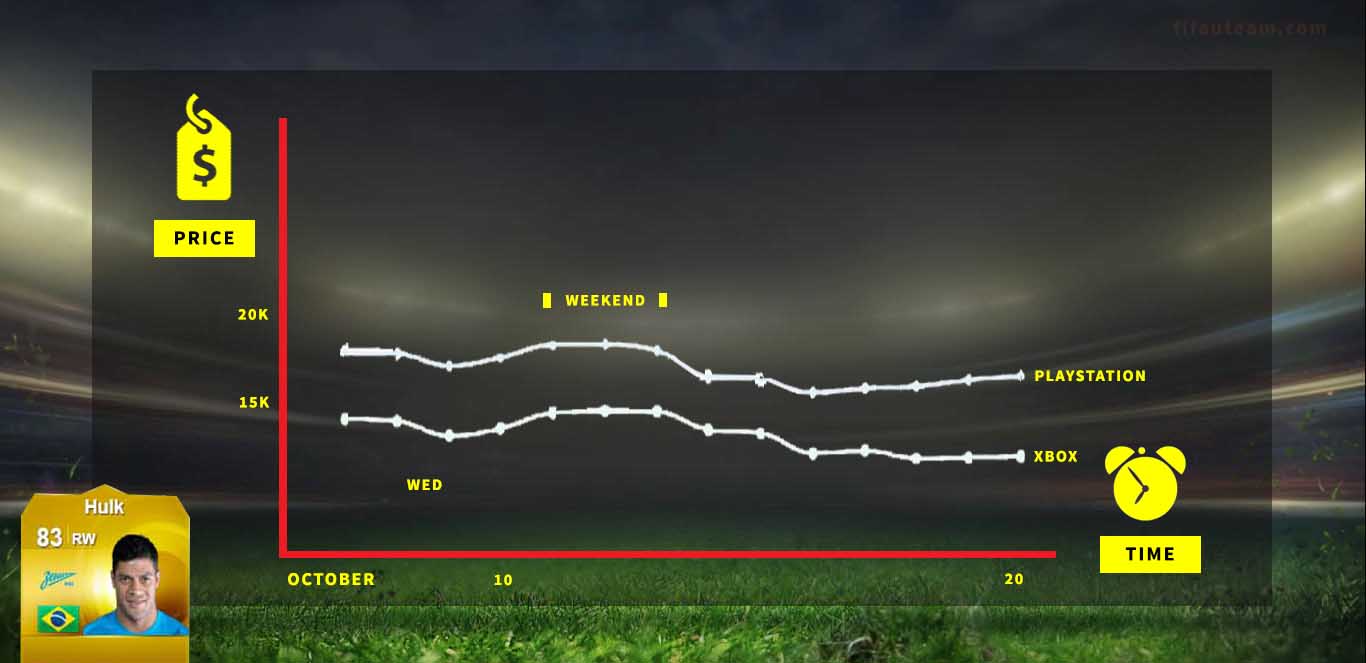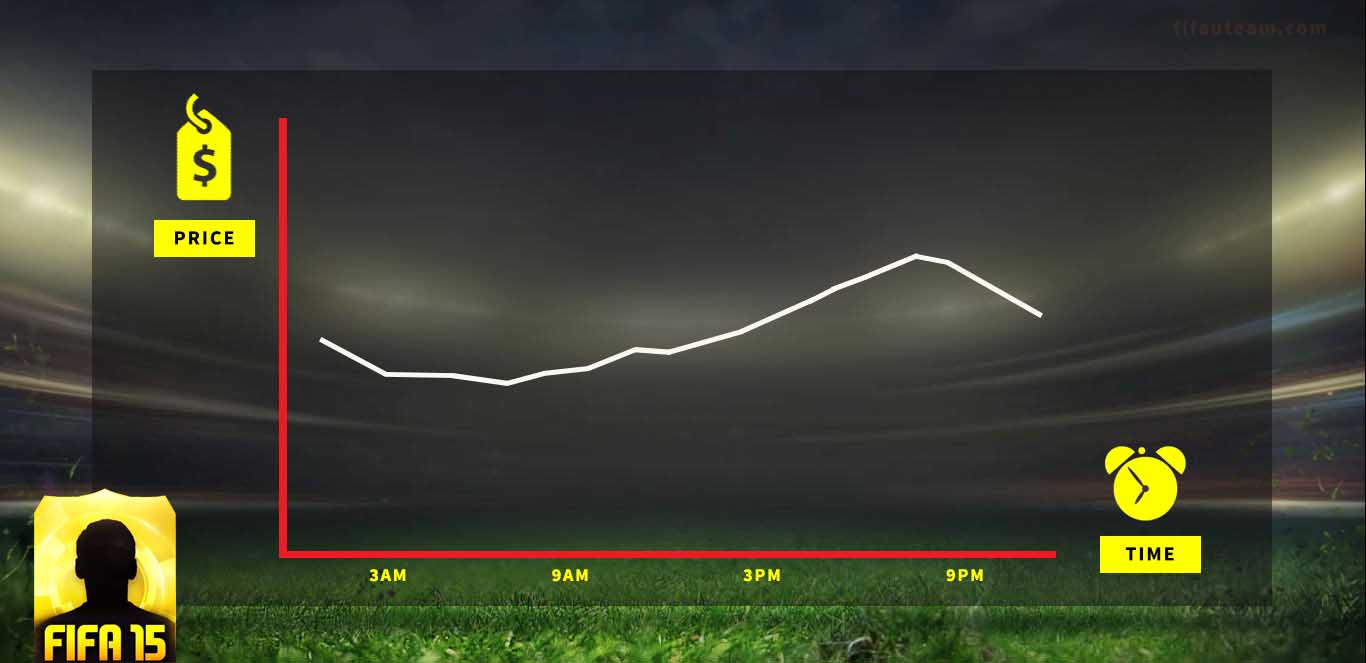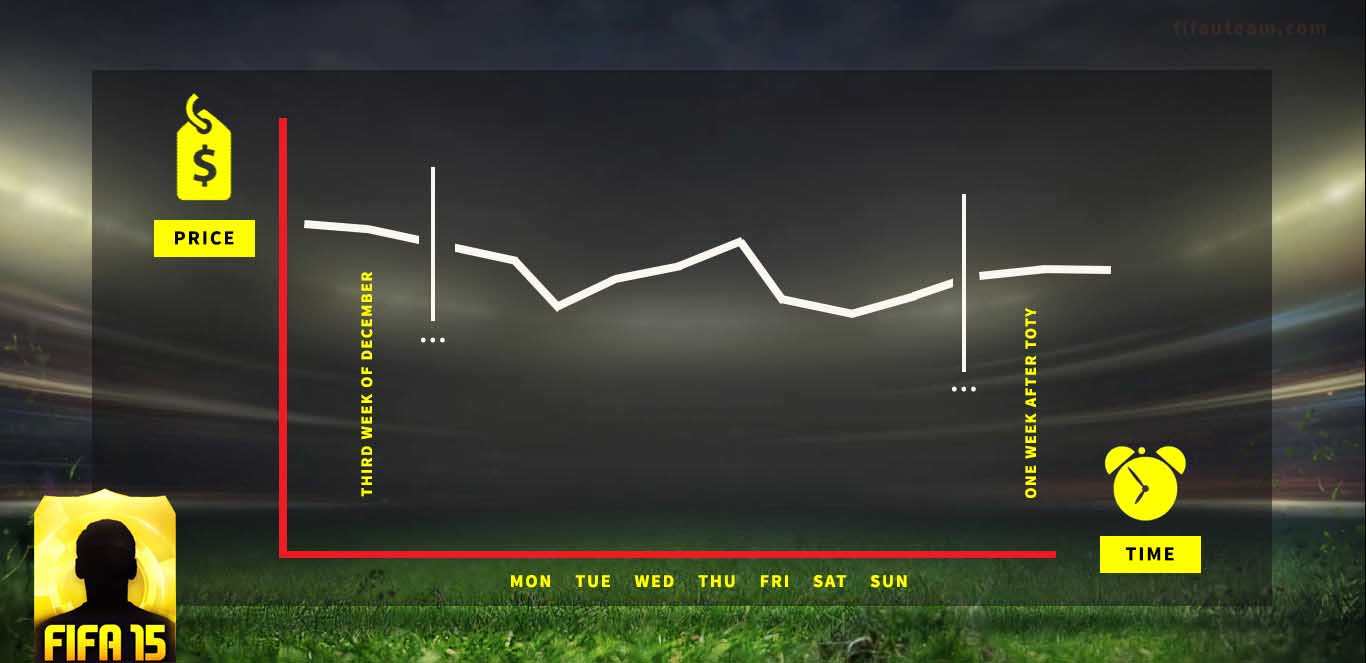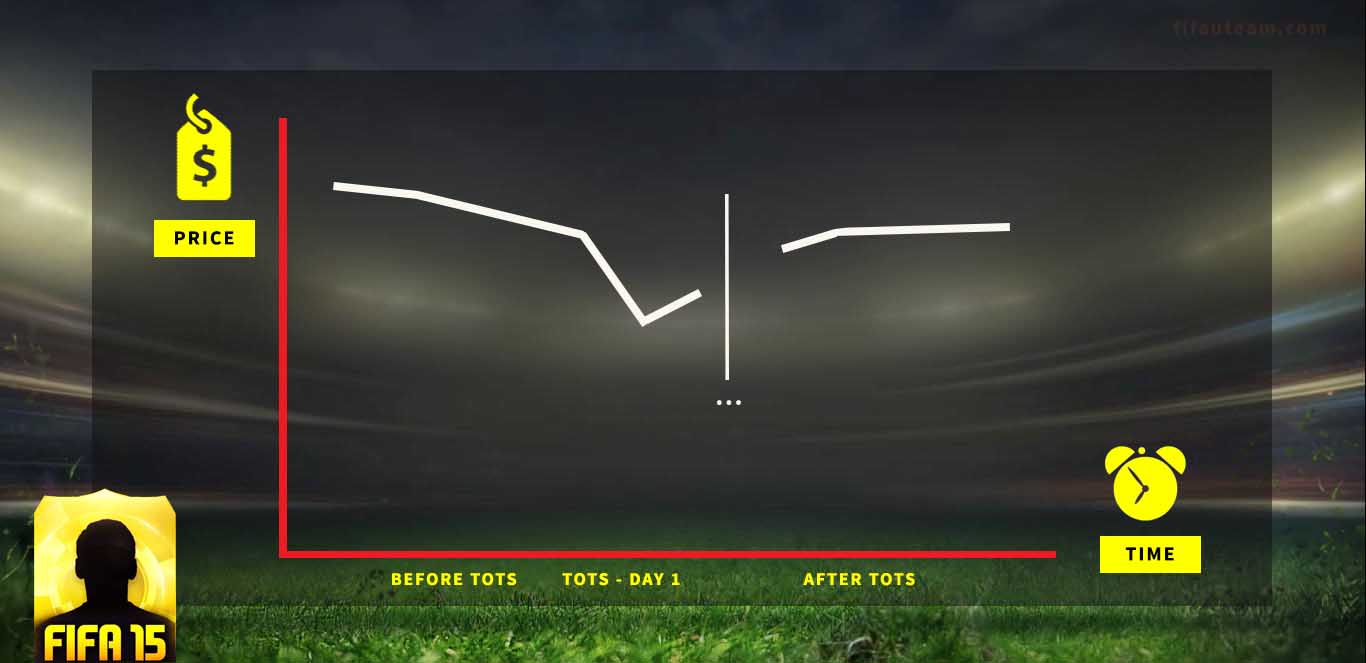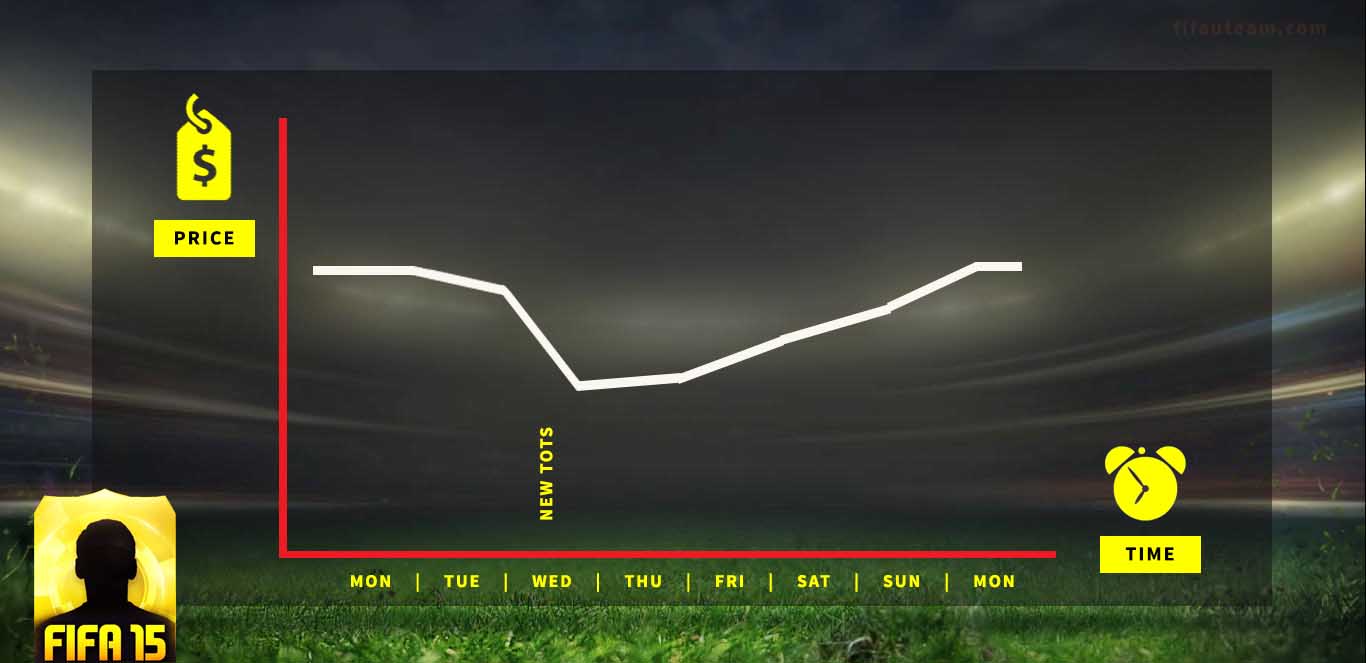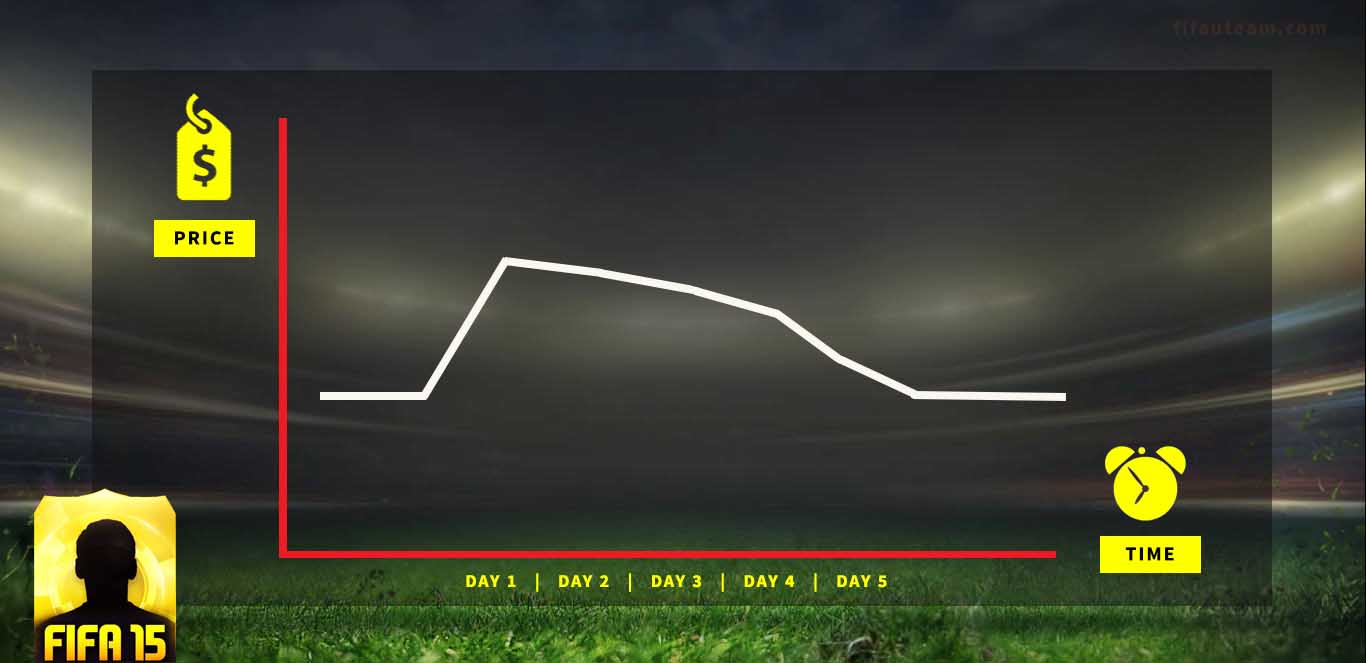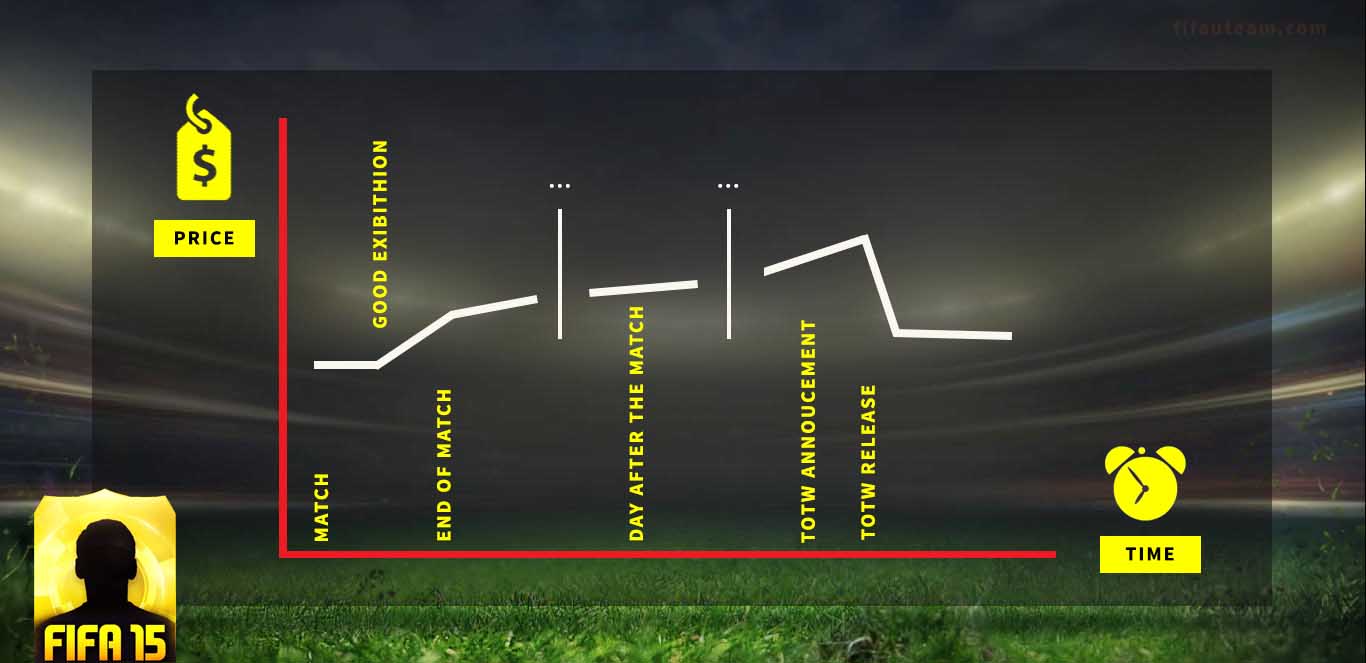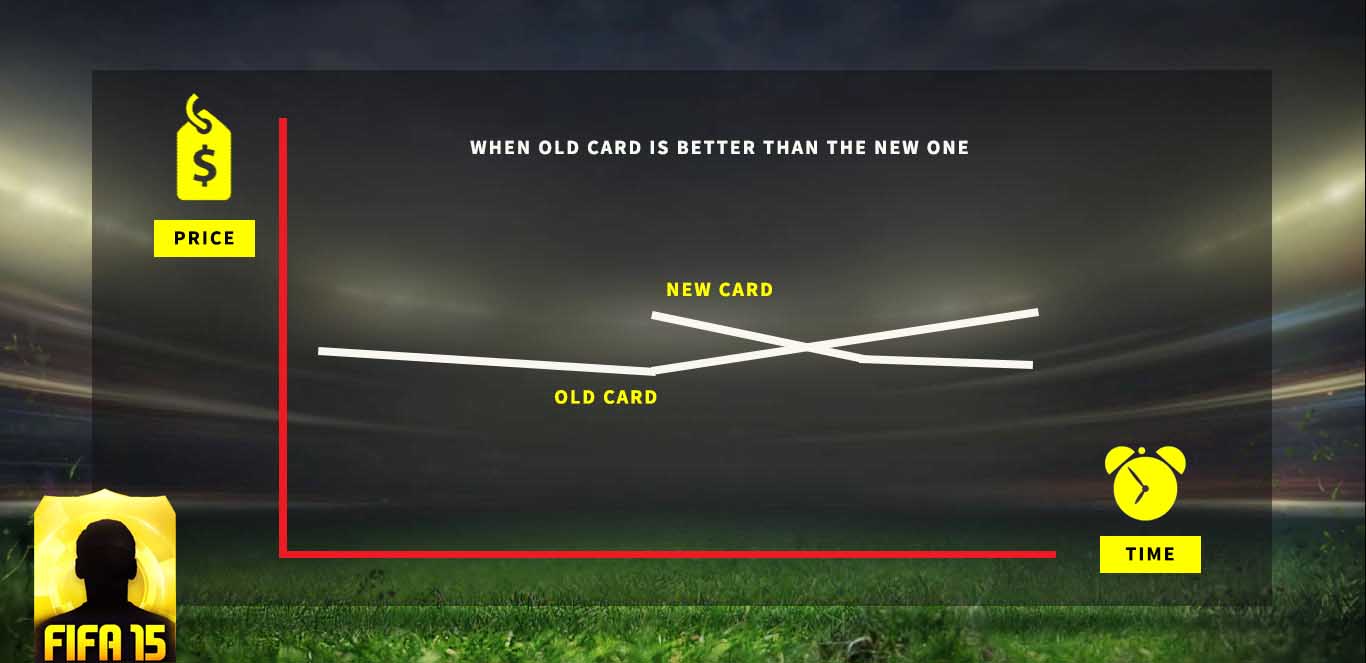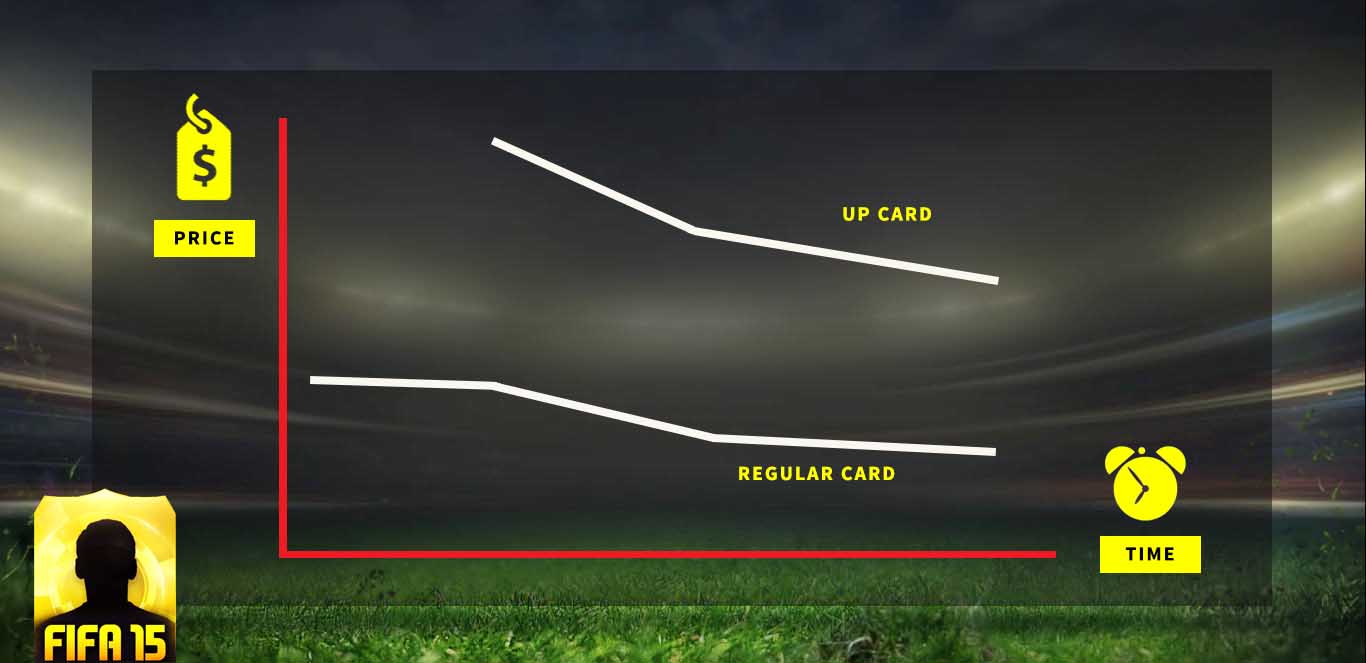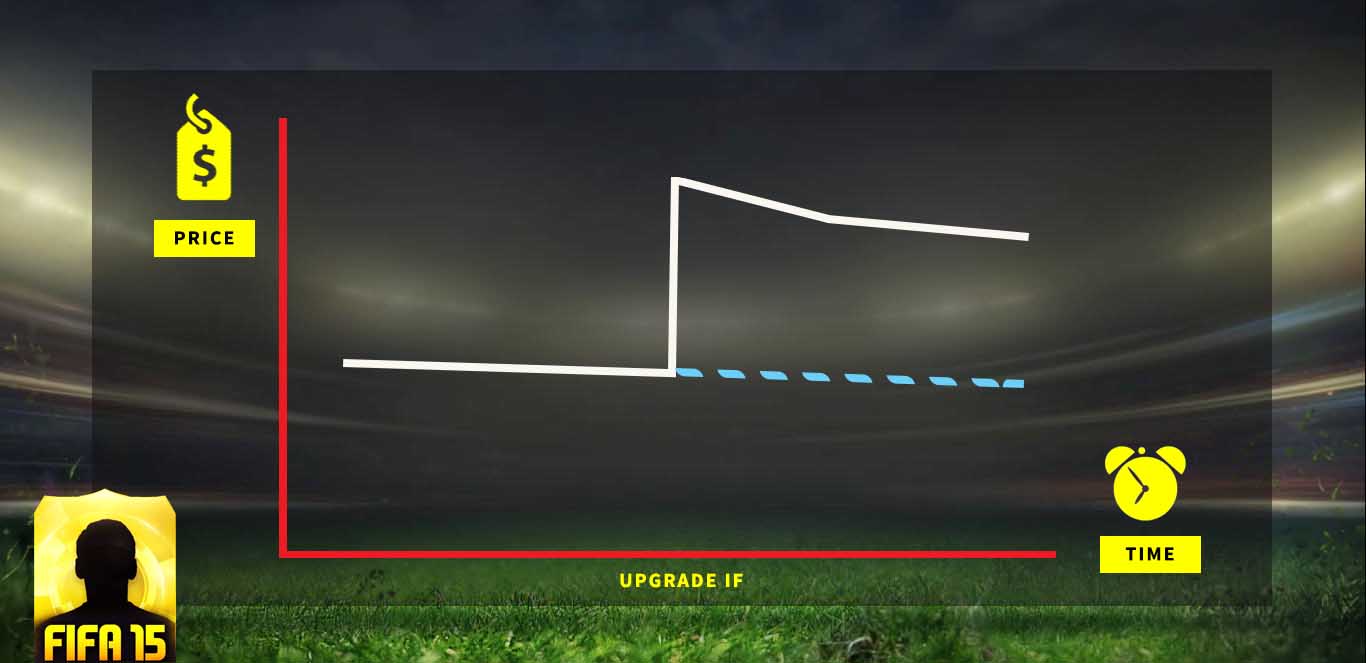Another FIFA 15 Ultimate Team trading guide, what’s it good for if you already know how to make coins? The thing is this isn’t a guide. This is THE guide. Confused? We’ll explain.
Without coins you can’t build a good squad. Making coins in FUT 15 isn’t even that complicated. There are hundreds of articles out there teaching you quick profitable techniques. Among them we have Tête a Tête with Silvio Teixeira, which has already helped thousands of players build their dream teams. However, the perspective of many players is still limited. They usually hear about one way to get coins and then manage to apply the technique with success, but they don’t really care to know how everything works. In the end, they just did what they were told. Nothing wrong about that. After all, if it works then it’s all good. The problem comes when circumstances require an adaptation of the model they’re currently following. In these cases, most players get disorientated, it’s not possible for them to adapt, so they have to immediately switch to another method that offers return. In some cases, people say nonsense such as “the market is not doing well” and then give up. These situations arise normally when the market is quite off-balance and so it comes out great either for buying or selling.
Wouldn’t it be great if you could profit no matter what happened? There should be an especially embracing guide, one devoted to the group of players that want to know what they’re doing. Something that leaves no doubts in the air…
We’ve done in the past more complete articles about this theme. We actually recommend, before you carry on with this guide, that you carefully read our suggestions on trading methods and trading tips. These are articles to give you knowledge about this matter. However, none answers to all of the important questions that are constantly asked: is this or that card’s price increasing? When should I sell this card? What price should I set? Will the price be higher or lower in a few months? Our objective is to help you find the answer to these questions. Of course, if you’re willing to reach that ultimate level, the article will be mandatorily long for you. But we’re sure it’ll make anyone a professional trader.
Quick Access
- The Market
The Basics
Happy Hours
Days of the Week
Hours of the Day
Team of the Year
Team of the Season
Tournaments
IRL
In Form Cards
Transfers
Upgrades
Introduction to Trading in FIFA 15 Ultimate Team
Trading is the best way to get rich on FIFA 15 Ultimate Team. But nobody said it’s easy. It’s necessary to know exactly how everything works.
You’ll be able to find everything you need to know in this guide. We’re specialists in this area and we perform very rigorous investigating and testing jobs in order to bring you the best information possible.
Trading is an word that means buying and selling goods or services. The most basic idea you need to have here is that, in order for you to make FIFA 15 Ultimate Team coins, you have to sell a card at a price superior to the one you paid for. And that superiority will have to be of at least 5% since that’s the amount EA confiscates from every sale finalized on the auction house, also known as taxes.
Buy low, Sell higher: you just need to do this to make coins in FIFA Ultimate Team
Most players aren’t able to buy and sell cards at a scale to profit enough to build great squads because they don’t understand the market and how business goes. Many don’t even know the basic rules of economics. What happens is that the FIFA 15 Ultimate Team market somehow behaves in a very similar way to a real and global market.
If you want to become a real trader on FIFA 15 Ultimate Team, our advice is for you to try and learn the basic ideas of micro-economics. If you’re a curious one you may even prolong your research in order to understand the game theory, one of the methods of applied mathematics, and you’ll see how it applies to the FUT 15 market. Since we want to keep the article simple, we’ll limit ourselves just to what’s essential for your success as a trader.
One of these fundamental concepts has to do with the law of supply and demand. This law establishes a relation between the demand of a product and the supply offered. With this it’s possible for us to describe the consumers’ behaviour whilst buying in determined periods, according to quantities and prices.
On periods when a certain product’s supply exceeds the demand a lot, its price tends to fall. On the other hand, on periods when the demand is superior to the supply, the price tends to increase.
The stabilization of the relation between supply and demand normally defines the product’s price, once both the buyer and supplier are in accordance with it. That’s called market balance.
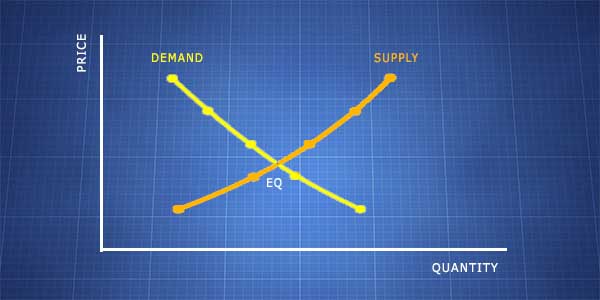
Supply and Demand Curves
The supply is the relation between a product’s price and the amount of it that sellers have to sell. The higher the price of a product, the more of it sellers will be willing to offer.
The law of supply says that the price and the amount offered in a determined market are inversely proportional. The higher a product’s price is, the less people will be willing or even be able to buy it. When the price increases, consumption power decreases and most people go for cheaper products.
The price of a product can be a positive or negative stimulant for the consumers to acquire what they need, but it’s not the only one. Just like what happens on FIFA 15 Ultimate Team, the decision may depend on spending capacity, the person’s wishes and needs, the concurrence and the existence of additional alternatives. In the same way that the supply may have an influence over the consumers’ demand, how often people search for certain products can also increase or decrease their prices.
On a perfect market structure of monopolist or oligopolistic concurrence, the consumers are the ones who define prices. In situations of cartel or monopoly, the opposite happens.
If you comprehend the ideas that were just transmitted, you should be able to have better perceptions of the FIFA 15 Ultimate Team market’s behaviour.
Prerequisites
Finally you’ve found a trading guide that will teach you how to get rich on FIFA 15 Ultimate Team. You’re anxious for reading it and then being able to see how it comes that there are so many players with such incredible squads. “There’s got to be some kind of trick”, you might be thinking. “It’s not possible how they’re able to buy so many great players.”
If this is more or less what you’re thinking, then you’re going to be very disappointed with us. We’re not bringing you any great secret for you to get rich quickly. But don’t fool yourself. You won’t find it here, nor anywhere else. Every time someone tells you you can instantaneously earn all the coins you want, know that you’re being tricked.
Here’s the naked truth: you won’t get rich on FIFA 15 Ultimate Team without hard work. Forget coin generators, card duplicators or other cheating methods you might run into. They’re no more than scamming attempts that will make you even more miserable.
But what do you need in order to get rich on FIFA 15 Ultimate Team after all? This is an important question because if you don’t follow the basic requirements, you might never be able to build your dream team.
Here’s what’s really indispensable:
- Time
Time is money everywhere. It’s not different on FIFA 15 Ultimate Team. You’ll need enough free time to keep up with the market. The more time you have, potentially more chances there are for you to earn many coins.
- Hard Word
This is a fact: 90% of players who look for these kinds of articles are after some magical solution for their financial problems. Many won’t get past this phase because they’re not willing to work hard.
- Patience
Patience, you gotta be patient. You won’t get rich tomorrow or the day after that. Many of the methods that are used to earn coins require you to be very patient. All the rich FIFA 15 Ultimate Team players also started from the bottom.
- Market Knowledge
Knowing the FIFA 15 Ultimate Team market is so very important. Use databases or add several cards to your transfer targets in order to monitorize their behaviour. Knowledge is power.
If you fulfil the conditions we here listed then you’re ready to get rich. And the best way to do so is with… trading.
The Market
It is important to know the FIFA Ultimate Team market very well in order to be able to predict its behaviour over time
Buy low, sell higher. This is the old saying for people who want to make coins. Pure trading. But all success passes through the full comprehension of the market and the evolution of its prices. Have you imagined being able to foresee the cards’ prices in each moment of the game? Unfortunately that’s not easy. The market is something quite complex. It’s difficult to perceive it, even more to predict it.
Our five years of experience were insufficient to gather clear and precise information about the tendencies of price evolution. For this reason, we’ve made an extraordinary effort and gathered, during all of FUT 14 and now FUT 15, the prices of 100 player cards and thoroughly analysed each one of these histories for over a year. It was an extremely tiresome job but at the same time compensating because it allowed us to show you the market in a way that it’s never been seen before.
When someone asks us if the price of a certain card is going to decrease or increase, probably they have no idea of how complex this question can be. Let us imagine as an example when it comes to an IF player whose UP has just been released on a Wednesday and EA is about to launch a 50k packs Happy Hour. There are many implied tendencies for each one of these characteristics. For it’s an IF card and there’s an UP, it all points to a price increase, although the fact that it’s a Happy Hour in the middle of the week indicates the opposite. And there’s more, each one of these factors have a different type of measurement. We could come to a conclusion but it would just take a hat trick from this player in real life for the price to go off and our conclusion to be ruined. What we want to say by this is that in order to evaluate a price’s tendency of evolution we have to know all the context well and individually analyse all the characteristics that are capable of altering the price. This is what we’re going to do in this guide: we’ll individually analyse them and it’s up to you to sum up the results of these individualizations according to the situation you intend to study. We won’t tell you if you should buy or sell. We’ll give you the tools and you’ll just need to know how to use them, knowing in advance that when prices are low it’s time to buy and when prices are high it’s time to sell. And they always change.
The Basics
Let’s start with the most basic of the tendencies: from the beginning and until the end of the game, prices are constantly falling. Forget about building a squad focusing on its valorization in the future, because this will never happen. After a month it’ll be worth less than you paid for and after two months the devaluation will be even bigger. The more time passed, the less your cards will be worth on the market. It’s the natural law.
Along this guide we’ll be illustrating our conclusions through graphics. It’s the clearest and most exact way there is for us to explain the influence each one of these factors have on market prices. It’s good if you’re able to interpret simple graphics such as this one. As you can see, it represents the price variations through time. It’s a descending line and the inclination varies according to the cards.
This representation of ours is too simplistic, though. In cases where the cards’ prices get close to their quick sell value, there is a converging aspect for the price such as the following image shows. So when the cards’ prices fall enough for them to get close to their quick sell value, they reach a minimum that’s kept until the end. It doesn’t go below that. The time it takes for a card to reach this final balanced price depends on its initial price (marked with an ‘A’ on the image). If the card’s initial price is sufficiently high, it will never be close to its quick sell value, that’s more appropriate for what the first image illustrates.
Except for rare situations, which we’ll explain later on this article, investing on players whose prices are close to their quick sell value is a bad strategy. Soon they’ll hit their historic minimum and the price will never increase again.
We said that the player cards’ prices decrease from the beginning and until the end of the game. But actually that doesn’t happen on the first day. Prices will go up until they hit a historic maximum after approximately two weeks, and only then the tendency is falling. We all get bronze teams initially and little by little we make improvements. So what happens is that the demand for average players is ridiculously higher than the market’s supply at the moment. Once the market has a bigger supply of these players, many people start going for the top players and the law of supply and demand goes back to being active.
The increment on prices during the first two weeks is very similar to all cards. However, the price falling that comes right after varies from player to player. Some get more devaluated because they didn’t match the expectations. This period of two weeks corresponds to the game’s learning curve and at this point players are already sharp enough into the game play to realise if the players are effectively good or if their price needs adjustment.
The price behaviour we described here isn’t equal to all players. The most expensive cards tend to lose their value more slowly. This happens because the amount of coins circulating gets bigger with time and more people are able to buy stars. They no longer want to buy ordinary players and so go for the expensive ones, those that are missing for their squad’s completion. More people are willing to pay more to have good players. This makes the most expensive players’ prices get even more distant to the less expensive ones, as you can see on the image below.
In some extremely rare cases, such as what happens with Messi and Ronaldo, the player’s price never goes down. It can be the opposite, though: it might go up. Obviously there are fluctuations, but those are justified by other factors that we’ll explain later on this guide. We’re just talking about general tendencies. The justification for this potential price increment is the same as the ones we gave before: while there’s game, there will always be someone wanting to buy these players. If that’s your case do it, but have the coins for them first, of course. If you postpone your purchase, you’ll probably pay more unless you also get the coins for other players that just had their price lowered.
Happy Hours
Happy Hours are responsible by prices dropping over the time
As we’re going to see there are many factors which may contribute for price variation, but few or none are as effective as Happy Hours. They hit the market’s balance by disrupting the natural relation between supply and demand. Thousands of players will buy packs, increasing not only the coin circulation but also the card circulation on the market.
The effect of this alteration is about an immediate price fall. Prices will be maintained low while the Happy Hour is going on and as it ends the market quickly absorbs the additional cards, making their prices go back to what they were before. Or almost. Actually, the prices are affected during and after the Happy Hour. This variation between the price that was supposed to be if a Happy Hour never happened and the price that effectively shows up after one normally goes from 3 to 5% of the card’s value.
As the years go by, EA does more and more Happy Hours. At this point people only get interested in 35k, 50k and 100k Happy Hour packs. The bigger the packs, the more prices will fall.
Let’s take a look at a practical case in order to realise what happens. Let’s get Koscielny as an example (it could be any other player), during the second and third weeks of November, period while seven different Happy Hours happened as you can see here. Such frequency of pack openings justifies why his price on the 20th was a lot lower than what it was on 7th of November. The most significant price decreases are noticed on 9/10 and 16/17, precisely when the 35k and 50k Happy Hour packs are released. The others were 25k and 15k Happy Hour packs. Notice how after the Happy Hours end the price is inferior to what it would be if a Happy Hour never happened while the natural tendency for it would be to stay the same. If on this image everything seems quite obvious to you, imagine 100 different ones, that’s what we did.
Happy Hours aren’t announced with antecedence for what the market can’t really react with such.
Days of the Week
We started by the Happy Hours for they’re an obvious window of opportunities to people who want to go trading. We continue now with days of the week since they’re also clearly a component of price variations. There are very few experienced traders not aware of there being these fluctuations.
Every Wednesday at 6pm UK a new Team of the Week is released. This is enough for there to be an introduction of many alterations on the market responsible for price falling.
– bigger amounts of cards enter circulation since the players tend to buy more packs in order to get one of the TOTW;
– the supply for NIF cards gets bigger than the demand;
– the amount of coin circulation increases because many packs are bought with FIFA Points.
On the weekend it’s the opposite. There are a lot of people on the market, the demand is way bigger, and because of that the prices tend to increase. This is the general tendency, but it doesn’t mean you can’t find good deals. With so many people on the market, especially softcore players that just play in these days, lesser mistakes made by them when listing a card are more frequent and you’ll be able to find a profitable opportunity if you’re alert.
On Wednesdays prices are low and on the weekend prices are high. You can buy midweek and sell on the weekend. And what about the other days? We’ll see transition stages in the rest of the days. On Monday prices are decreasing, but since they were way too high just the other day they’re still gonna be a bit high. On Tuesday, the community clearly anticipates what’s gonna happen on the next day so the prices fall to very low values. The historic minimum of the week happens Wednesday night. On the next day they’re already increasing and on Friday the market is once again anticipating what’s to happen on Saturday and Sunday.
To exemplify, let’s analyse the player Hulk between days 7 and 20 of October. All the type of behaviour we described above is very notorious. Unless there are other factors conditioning these price fluctuations, the difference between maximum and minimum prices reflects your profit.
Hours of the Day
Just like there’s supply and demand variation in certain times of the week, there are also more and less propitious hours of the day for trading. It’s easily noticeable that there’s less demand at dawn and so prices will decrease. It’s true that supply decreases as well, but this factor isn’t as affected as the demand because there are a lot of people that set auction durations that go over night. Prices normally hit their minimum between 2 and 9am, when there are less players looking for cards on the market. On the other hand, cards are always more expensive between 6 and 9pm, that’s when it’s prime time in the UK. On the same day price differences can reach 10%.
Over the 24 hours, these are the periods that represent more and less traffic:
- Hours of very reduced traffic: – from 2:00am to 9:00am;
Hours of reduced traffic – from 9:00am to 2:00pm and from 12:00am to 2:00am;
Hours of moderate traffic – from 2:00pm to 4:00pm and from 11:00pm to 12:00am;
Hours of intense traffic – from 4:00pm to 6:00pm and from 9:00pm to 11:00pm;
Hours of very intense traffic – from 6:00pm to 9:00pm.
General rule, hours of less traffic are the best for buying and hours of more traffic are the best for selling cards. But if you’re a purist, this can be a bit more complex. In order for you to keep this article as simple as possible, we highly recommend that you read what we’ve published here about the subject so you have a better idea of which are the best hours for buying and which are the best ones for selling.
Team of the Year
Once a year, a team featuring the best players of the year is announced. On FIFA 15 this is the TOTY, which is released on the 12th of January. Such as the Happy Hours, this release is responsible for thousands of pack openings. It also means severe price falls. The biggest difference is that everything happens at an absolute immense scale: these cards are the best in the game, they come in packs for one week and prices fall to never before seen values.
The effect caused by the Team of the Year is felt way before it’s even announced. The game barely starts and there are already some players planning on building their squads in January, at a point when buying the best players will cost them the same as how much they’d spend building an average team in the beginning. Many others decide to monetize their teams, selling them all before the TOTY comes out and then buying it all again. The start of a more severe devaluation happens before Christmas and is prolonged until the TOTY release.
The cards’ prices on the market follow, generally, the tendency illustrated on the following image. We can divide this price behaviour by the following stages:
- Stage 1 – Before the TOTY release
Prices start to fall more severely as from the third week of December.
- Stage 2 – TOTY release day (12th of January 2015, Monday)
Cards get cheaper.
- Stage 3 – Second day of TOTY (13th of January 2015, Tuesday)
Prices slightly rise because the market is saturated with defenders.
- Stage 4 – Third and fourth days of TOTY (14th and 15th of January 2015, Wednesday and Thursday)
Prices rise even more because there are only 3 TOTY players available in packs instead of 5 and because everyone is waiting for the most valuable cards to come out: the attackers.
- Stage 5 – Fifth and sixth days of TOTY (16th and 17th of January 2015, Friday and Saturday)
Prices fall with the release of the most wanted cards: the attackers.
- Stage 6 – Seventh day of TOTY (18th of January 2015, Sunday)
Cards get even cheaper since now all TOTY cards are available in packs.
- Stage 7 – The week after TOTY
Prices go back to rising progressively until the end of the next week. They don’t hit values as high as the ones on stage 1 but aren’t as low as any of the other stages.
During the TOTY week it’s very common for Happy Hours to be released, including 100k packs, so the price behaviour during this period can still suffer alterations. Remember that we’re analysing each factor individually. You should sum up all these factors according to the situation.
Team of the Season
Minimum prices are usually reached during the Team of the Season
During one month, between May and June, EA Sports selects the best players of the season for each of the main leagues and releases them in several teams named Teams of the Season. Alongside the TOTY, this is the moment responsible for the biggest price falls in the game.
Although it seems like there are similarities between the TOTY and the TOTS, they’re not that similar and for that their effect on the market is also distinct. Firstly, the TOTS is responsible for the release of many more blue cards but none of them are in the same level as TOTY, and for that reason their price is always lower. The remaining cards’ prices are lower during TOTS because it’s closer to the end of the game, and as you’ve already seem cards tend to devaluate with time. The biggest difference between them is about duration. While the TOTY only goes for a week, the TOTS keeps going for several weeks and that contributes for bigger windows of opportunities. Instead of selling all your cards and then buying them again, you can take advantage of the price fluctuations along the TOTS weeks in order for you to get rich.
The release of TOTS represents the following effect on the market:
- Stage 1 – Before the TOTS release
The players’ prices fall a few weeks before the release of the TOTS. Anticipating themselves for this moment, many people sell their player. They know their cards will be worth less on the following weeks and many also need coins to invest in packs. The closer it is to the TOTS release, the lower prices will be. Until you reach stage 2 you might not notice very big price falls but it’s always a good idea to sell your cards the earlier possible if your plan is to take advantage of the TOTS to get some coins. The consumables’ prices remain practically unchanged in this stage since players need them for their squad and probably won’t sell them.
- Stage 2 – First TOTS release day
Once the first three TOTS are released a very big price fall is noticed. They’ll hit their historic minimum. Many players have sold everything they had and are in this stage spending all their coins on packs. And just like the most basic law of economics says: when the supply exceeds the demand, prices fall; when the demand exceeds the supply, prices rise. In this case the market becomes saturated with players, staff, consumables and club items. That means prices are very low. And it remains this way because players keep on buying packs until the last TOTS.
- Stage 3 – TOTS weeks
Many players store coins to spend on packs during the best TOTS. Prices remain low until the very end of this stage because players are permanently opening packs.
- Stage 4 – Period post-TOTS
As you’d imagine, many players want their squads back. According to the same laws of the market we mentioned above, prices rise in this stage. However, they don’t go back to where they were before the first stage. Most cards end up stabilizing at a slightly lower price.
At a macroscopic scale you noticed what happens. But what about all the way through the TOTS? It’s important to analyse the tendencies during these weeks in order for you to be able to buy cheap and sell expensive during this period. The first thing you need to know is that the day of the first TOTS release is probably the one in which prices hit a historic minimum. From now on prices are particularly low through the weeks of the Barclays PL TOTS release as well as the Bundesliga, BBVA and EAS FC ones, but they don’t fall enough to reach the values of the first day. For one TOTS, the cards’ prices vary along the week, increasing/decreasing more than 20%. Normally they’re lower on the first days and higher on the last days. Monday and Tuesday, for example, are good days for selling.
Tournaments
EA Sports seem to have realised the real capacities of rotational tournaments on FIFA 15 Ultimate Team. This is the only explanation for lately they’ve been releasing many tournaments and there are still a lot more to come. Tournaments are important to increase the number of packs opened because once those have different requirements, EA forces players who wish to participate to acquire new cards. Naturally this agitates the market. Not the whole market, but the branch according to the specific requirements of one tournament.
Tournaments aren’t announced with antecedence. You only get to know the entry requirements once it starts. At this point the demand for these cards rise exponentially, the market adjusts in a few hours and these cards’ prices fly. Plus, tournaments never go beyond 7 days of duration, normally they don’t even reach 5 days, so when they’re released the effect on the market is immediate. Players don’t have time to postpone their demand for the cards they need in order to participate. If they do want to play it’s best to buy as early as possible. As the tournament walks to its end prices decrease, making the cards reach the value they used have before the tournament was released in a few days.
As you can see on the image below, which exemplifies the case of a 5 days tournament, these cards’ prices increase a lot on the first day of the tournament. On the second day it almost remains the same, but from this time there’s a clear tendency of devaluation. Normally, two to three days after the end of the tournament the cards reach the price they had in the first place. For longer or shortest tournaments the tendency stays the same, varying only the rhythm in which the cards devaluate after the second day.
On most of the tournaments, valorization doesn’t even reach 40%. This number stays even further from that when it comes to tournaments that require more expensive players. However, there are some cases in which it’s possible for us to predict when the tournament is going to happen. When that’s the scenario, some players buy the cards in advance making their prices inflate after the tournament is released. It’s what happens on St. Patricks Tournament, when the Irish players tend to have their price duplicated.
A few prices’ cards may be affected by the tournaments, depending of its prices and requirements
The influence of tournaments doesn’t limit itself only to player card prices. It extends to consumables, especially when it comes to contracts, they’re naturally made more expensive. It’s easy to realise why this happens: in order for people to fulfil the requirements they go after new player cards, and in order for them to be able to play matches they need contracts.
IRL
One of the factors that have direct influence on prices is the player’s form in real life. This is underestimated by the less experienced, but the truth is that good appearances by players have immediate reflex on the FUT 15 market. On practice this doesn’t make much sense because the players will remain exactly the same. However, since normally who plays FIFA is also a football spectator, players in the highlight won’t go unnoticed. Many people wish to try out the players they’ve seen play well in real life. Mainly those that score goals. This exposition makes them be part of market transactions more frequently in the end. The players’ price increase starts being visible yet during the match in real life, extending itself during the following hours. Many times prices only go back to normal after several days.
Monday and Tuesday are usually the best days to buy TOTW cards from that week
The player’s good appearances only affect his price. It has no effect on other players. Normally the increment doesn’t go beyond 30%, although there are some cases with more notorious players who have their price duplicated in just a few hours. It all depends on how good the player’s performance was and how average the match was. The least popular players have more chances of suffering bigger price percentage increases.
There are also people who buy these players not also for the emotional factor but as pure investment, aiming the TOTW. Along the week prices tend to slightly increase until Wednesday. On this day, shortly after the TOTW is announced, these players’ NIF cards rise significantly, going back to normal once they’re refilled on the market about 3 hours later.
In Form Cards
In most part of this guide we’ve been describing how the cards’ prices behave on the market according to determined moments and events on the game. It’s come to a point of almost generalizing that all cards would behave this way. However, it’s appropriate that we make the distinction of In Form cards because these are ones that behave considerably in a different way..
IF cards, also know as In Form, are special editions of player cards that once stood out in real life for their good appearances. These player cards have got improved attributes, for that’s why they’re extremely valuable compared to their regular version. There are several types of In Form cards, according to the competition the player had a good performance at: TOTW, TOTY, TOTM, TOTS. Except for MOTM, all In Form cards are usually launched in packs during the week. The price behaviour is similar to all of them on the first 7 days.
There are few IF cards being auctioned in the first hours after their release but there are many people interested in them. Basically the person who pulled them can define unrealistic prices and still manage to sell them because whoever wishes to have that card will be forced to pay the stipulated price. After a few hours new IF owners appear and define more realistic prices, forcing the others to do the same. The price keeps on falling on the following days, more gently than what happens on the first day of course, as a result of there being more similar cards on the market. Between the fifth and sixth day the market finds itself saturated and they hit their minimum price. However, on the seventh day IF cards no longer come from packs and the market notices that. The cards that were previously cheaper will no longer be available except in smaller amounts each time. Players realise that and the cards’ prices go back to increasing.
The In Form price tendency after the seventh day is as important as or even more than what could be noticed during the week. It varies according to the importance of the cards. The cheapest ones normally tend to follow devaluation, stabilizing near their quick sell value. The ones that keep on being great alternatives for a squad become even rarer and for that they’re more expensive. General rule, prices keep increasing until the end of the game.
Although there’s a pattern on the In Form cards’ price behaviour, it’s important to stay alert for potential variation factors. Here’s a few examples of In Form players who will get their price inflated for other reasons:
- Players with greatly improved pace;
Very popular players or players from very popular leagues;
Players who were upgraded to the maximum silver rating (74);
Players who got their position changed;
Players that were already high rated in the first place;
Players who already had an In Form;
Players who fulfil the lack of good solutions in a determined position for a league or nationality.
Transfers
The summer and winter transfers that happen in real life are applied to the game. A player who switches between clubs receives another identical card except for his new club/league displayed. These are the cards that will start coming in packs, replacing the old ones. The cards of this player that already existed remain unchanged. That means one player can have two different cards circulating the market.
These new cards’ prices vary mostly according to their new scenario. When the player goes to a popular club, his new card’s price will start rising to even reach three times the original value, and only after a few days it’ll eventually get close to the old card’s value. Many times these changes don’t even benefit chemistry for when the player remains in the same league. However, some players’ emotional will lead them into paying many coins for a card that’s actually not that different.
When a player goes to less popular clubs the new card’s price gets slightly superior, but then after some time the old cards become rare enough to be considered the most valuable ones.
Upgrades
The Ultimate Team players’ ratings and stats are given before the game is released and, different than what happens on other FIFA game modes, they don’t progress along the season. In order for them to make these cards more consistent to what’s going on in real life, EA adjust adjust them in January or February. The most outstanding players in the first months of the season receive an upgraded card, known as UP. From that time cards with the new ratings start being available in packs, taking place over the regular ones. As expected, once the UP cards arrive their price is fixed just above the regular one. The old ones, then, start descending. Also, the UP cards devaluate with time, but at a higher rhythm. The price difference between the UP and the regular cards depends on many factors, such as the number of overall points risen, stat bonuses or an eventual position change.
The deal opportunities concerning the new UP don’t stop here. What happens is that when the player already has at least one IF card, they’re improved in the same proportion as the UP was in relation to its regular one. That means if a player’s card had a determined rating improved by, for example, two overall points on his UP card, then all his IF cards are automatically improved by two points. The only exception is when a player receives an upgrade that makes him change category. In that case his IF stays the same.
For someone that has an In Form of a determined player, seeing him get an upgrade is great news. There are those who take the risk of investing on IF player cards with great probabilities of receiving upgrades because they know that, if that happens, the return will be enormous. The higher the player’s rating and popularity, the bigger will be his IF card’s valorization. In some cases it can even surpass 300%. In the long run, these cards follow the tendency we described for a normal IF: the cheapest lose value, while the most expensive have their price slowly increased.
Now that we’ve explained to you how the market works, you can already apply your knowledge on any situation. We’ve individualized all the factors that influence prices so now you can put all the pieces together according to the case you wish to study. At first it will seem a bit complex, but with some practice you’ll deal with de market naturally. For example, you know that if you buy cards for their minimum buy now price on a Wednesday night, you’ll have certain profit selling them during the weekend also for a minimum buy now price, as long as there aren’t other happy hours going on. And for that you will barely waste time. It’s about identifying the conditions that might exist for your situation.
For people that want to make coins, nothing is as important as knowing the market. With this knowledge we can do what we want. Although we’ll always be subject to failing, we do know what’s gonna happen to the price in each moment. This is how we make fortunes every year. With just a fraction of the work done by other players we’re able to gather several millions of coins. And the more coins a player has, the easier it is to make more. Now it’s your turn…

